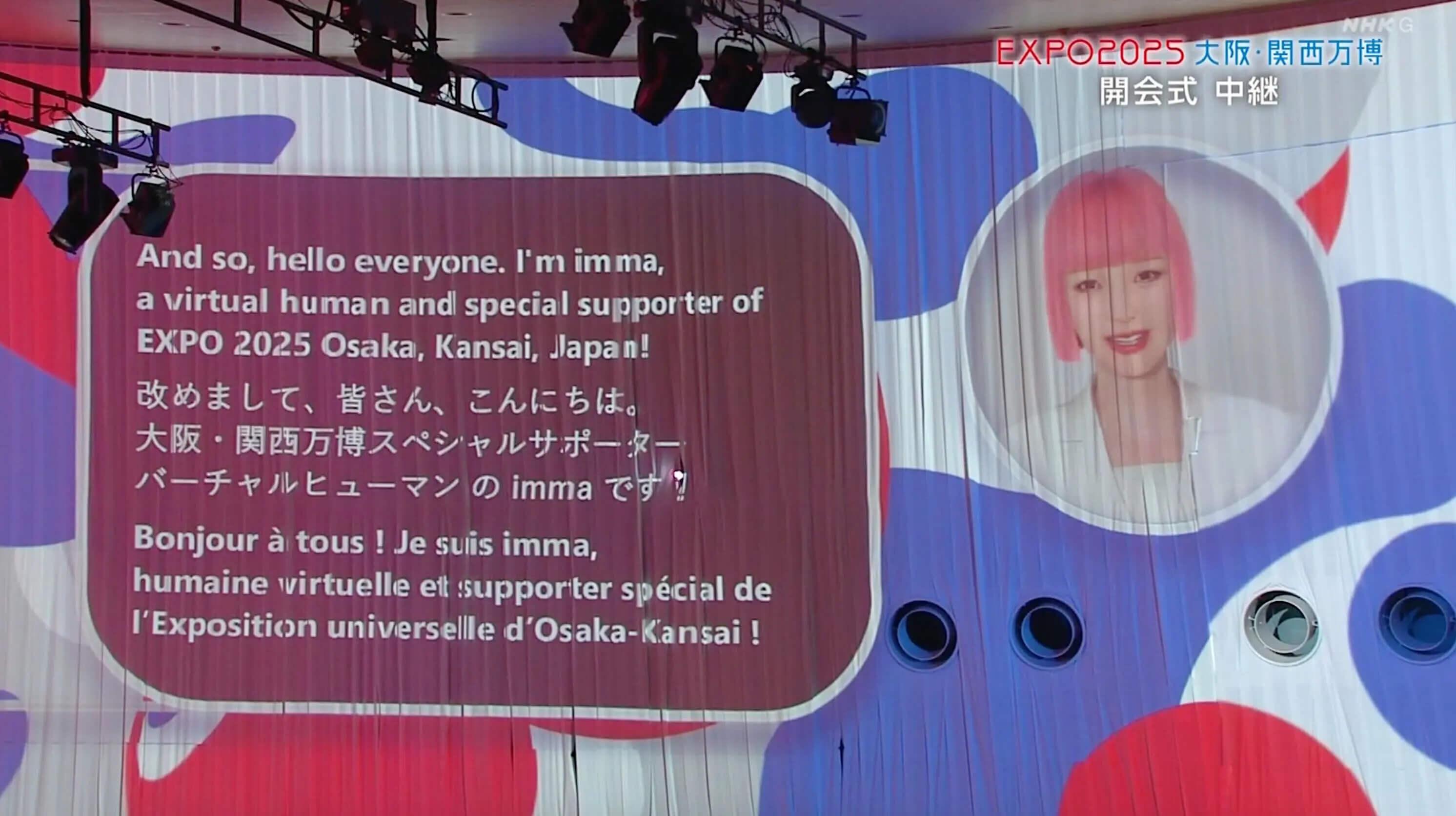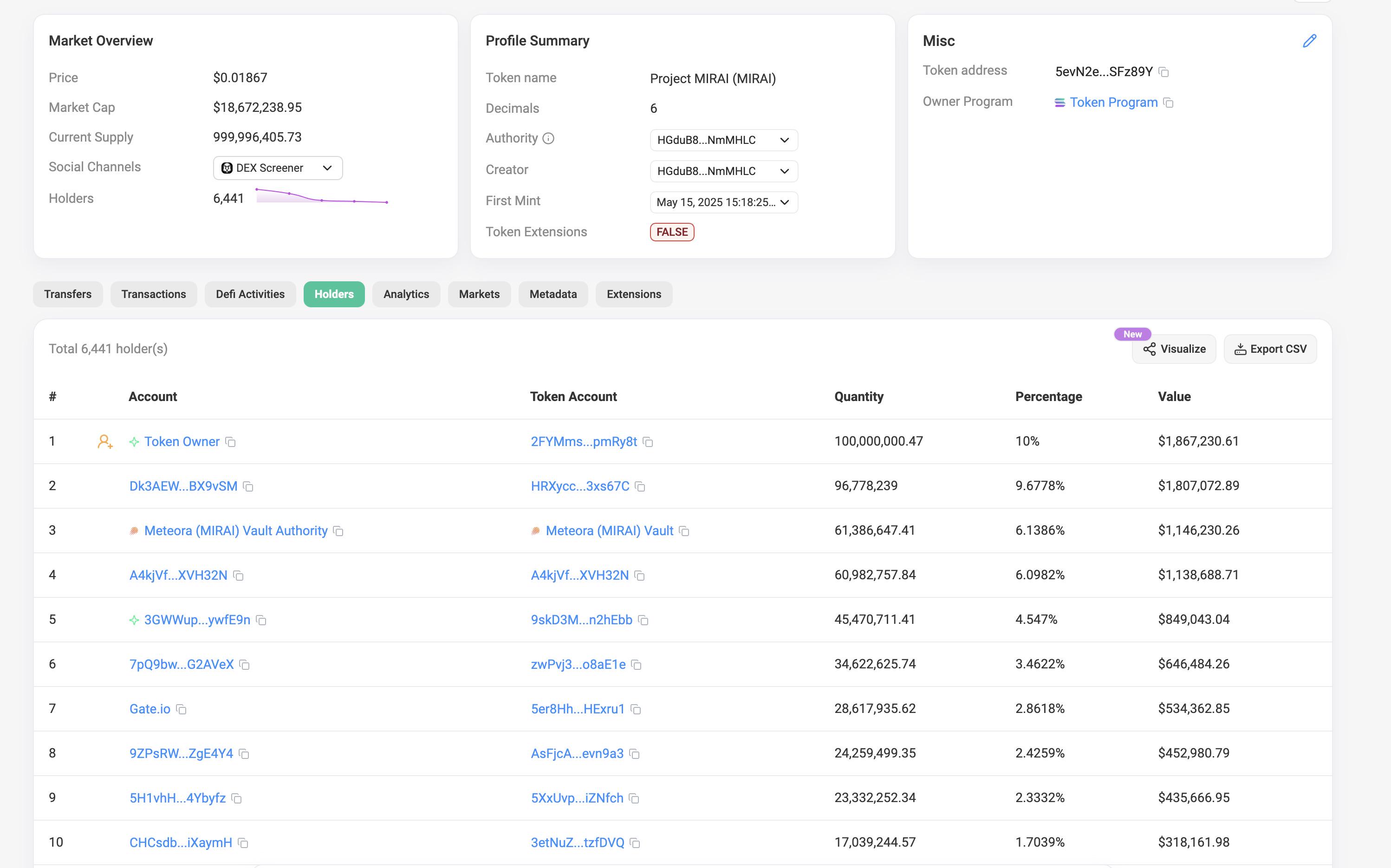Is MIRAI a gimmick or an innovation? How far can this "hot topic" project go?
Author: Zen, PANews
The combination of a popular virtual idol + AI + Web3 has created the buzz around MIRAI. Initially, it raised over 76,000 SOL (approximately $12.9 million) in just one week, setting a fundraising record for Japanese Web3 projects, and then launched on Binance Alpha on May 16, further increasing its exposure. Additionally, to expand its community influence, the MIRAI team has actively engaged with popular meme coin communities, including interactions with PNUT, MOODENG, and NEIRO.
“MIRAI” is a joint initiative by Aww Inc. and the Solana ecosystem AI platform Holoworld, positioning itself as a Web3 attempt at a virtual persona, proposing an unprecedented narrative concept of virtual humans + Web3. Simply put, it aims to "put CGI virtual characters on the blockchain." According to official information, the MIRAI project combines Aww Inc.'s expertise in CGI modeling and character design with Holoworld's blockchain infrastructure and AI technology, aiming to create a virtual character with autonomy and intelligent agency.
Is MIRAI a gimmick or an innovation? How far can this "hot topic" project go?
Aww: Creating the world's leading virtual influencer imma, partnering with NVIDIA
Aww Inc., founded in 2019 and headquartered in Tokyo, is Asia's first company focused on "virtual human" technology, dedicated to combining 3DCG, artificial intelligence, and real-time streaming to create highly realistic digital characters for brand marketing, content creation, and metaverse applications. The official statement indicates that the team not only provides virtual human technology licensing but also promotes "global IP co-creation based on real-time streaming, content, and AI." Aww claims to be the first in Asia to propose the concept of "virtual humans" and has launched dozens of such virtual personas.
In terms of commercialization, Aww Inc. has diversified its revenue through global licensing and brand collaborations. The most representative example is the virtual model imma, which debuted in 2018. By the end of 2024, her Instagram followers are expected to exceed 400,000, and her TikTok following has surpassed 480,000. Due to her "unique pink short hair and exquisite CGI modeling," imma has become a leading "virtual influencer" in the fashion and business sectors, favored by top global brands, serving as a digital ambassador for major fashion labels like Burberry, COACH, BAPE, and Doublet, and previously acted as the global brand ambassador for Lenovo's "Yoga" series laptops.
In the sports and cultural fields, Imma's presence is equally ubiquitous. At the closing ceremony of the Tokyo 2021 Paralympics, Imma participated as a digital persona, becoming the first virtual human to appear in a series of Paralympic events. Forbes Poland included Imma in its "Women of the Year" list in 2020, recognizing her influence in "breaking the boundaries between reality and virtuality, empowering digital creativity." At the opening ceremony of the Osaka Kansai Expo held on April 12 this year, Imma served as the host as a "special support ambassador," introducing VIPs and guiding the event's progress.

In terms of technological development, Aww Inc. has established a strategic partnership with semiconductor giant NVIDIA. In June 2024, Aww officially disclosed that this collaboration will integrate NVIDIA's AI audio-driven technology (Audio2Face) and GPU acceleration capabilities to enhance real-time emotional interaction and voice lip-syncing for virtual characters, ushering in the "AI-powered virtual human 2.0 era." In the future, Aww plans to continue expanding its IP portfolio and, in conjunction with NVIDIA and its self-developed AI tools, provide a complete virtual human solution for various industries, from advertising endorsements to immersive metaverse experiences.
Thus, it is evident that with its early market positioning, well-known virtual IPs, and technological strength, Aww Inc. has established a certain brand influence in the Web2 world. Meanwhile, IPs like IMMA have gained a wide fan base and commercial value among younger demographics, which have become important resources for the MIRAI project to make strides in Web3.
Entering Web3: From Imma to $MIRAI
Three years ago, Aww Inc. co-founder Takayuki Moritani stated, "I am researching and creating artificial intelligence, virtual reality, and various platform businesses, but I am also focusing on building a community culture formed by blockchain, which will influence individuals' futures. In such a community culture, virtual humans and their related intellectual property will become very important."
Now, Moritani's vision has officially materialized—MIRAI, co-created with the Solana ecosystem's AI platform Holoworld AI, aims to establish the first "virtual idol + Web3 autonomous co-creation" ecosystem. Notably, the name Imma is derived from the Japanese word "ima," meaning "now," while MIRAI means "future" in Japanese. The new project's name may express Aww's aspirations: entering the Web3 space is akin to stepping into the future.
In terms of project empowerment, Aww Inc. provides core support based on its years of IP operation and community management advantages in the Web2 world. Aww Inc. clearly stated in the announcement of the presale launch on its official X account that this collaboration leverages the appeal and fan base of its virtual idol Imma and other IPs to provide a stable community traffic entry for the MIRAI presale. Imma has over 1.5 million fans across all platforms and has engaged in deep collaborations with internationally renowned brands, forming a high-viscosity marketing model that integrates online and offline, providing a mature commercial path endorsement for the project.

Holoworld AI injects "intelligent agents + decentralization" into the project through its underlying technology and on-chain infrastructure. Holoworld announced on Twitter that its strategic partnership with Aww Inc. aims to co-build "the first consumer-friendly on-chain AI virtual human infrastructure," with Hololaunch as the launch platform to help the MIRAI project complete its first round of issuance in a fair and transparent manner. Additionally, Holoworld will launch several core tools and services for MIRAI, including a new generation Launchpad, Agent Studio V2 (providing video and image APIs and credit pricing systems), Agent Livestreaming, and multi-chain deployment support (Open MCP). These features are planned to be rolled out in the coming quarters, providing full-stack technical support for virtual human content production, interactive experiences, and ecosystem expansion.
According to the project roadmap, MIRAI will launch Agent Studio V2 in Q3, allowing creators to generate high-quality multimodal content with one click; Q4 is expected to achieve the first Agent Livestreaming, enabling MIRAI characters to have real-time audience interaction and voting capabilities; finally, a complete DAO governance platform will be launched in early 2026, allowing community members to propose and decide on major matters such as IP derivative products and ecosystem fund allocation.
Interpreting MIRAI: Gimmick or Innovation?
Based on high-fidelity CGI and deep learning technology for image and behavior, MIRAI envisions an AI-driven virtual human character bound to a blockchain identity system. This model allows virtual humans to make autonomous decisions, interact with the community, and receive incentives through a token economy, which can be seen as a new paradigm of "AI agents + on-chain identity." The project allows the community to act as co-creators and co-governors of the character, jointly deciding the storyline and IP derivative direction. Once community members hold tokens, they can participate in governance, use the character's image for secondary creation, and share profits, breaking the traditional one-way creation model of virtual IPs. This mechanism is similar to "content as mining," encouraging users to extract economic value through creativity and labor.
However, innovation also comes with numerous risks. In terms of the token economy, the total supply of MIRAI tokens is 1 billion, with 25% allocated to the team and partners, while the top 100 addresses before the presale stage hold over 60% of the tokens, and the overall number of holding addresses is decreasing, with large holders increasingly concentrating their holdings. This will lead to a high concentration of governance power, and the so-called community decision-making may become merely formal. Additionally, 25% of the liquidity pool is released in phases; if a large amount floods the market early, prices may experience significant volatility.

In terms of community operation, while decentralized co-creation can stimulate vitality, it also brings management challenges: the quality of user-generated content can vary widely, and without effective review and incentive mechanisms, it is easy to encounter "story deviations" or copyright disputes. Frequent derivation and collaborations of characters may also weaken the consistency and recognizability of the core IP. The success of virtual idols like Imma is supported by continuous high-quality content and trending topics; once innovative gameplay is lacking or attention declines, the character may quickly fall into the quagmire of "character collapse" or declining popularity.
What is even more concerning is that when the hype of excessive speculation fades, we may realize too late—has blockchain truly endowed virtual idols with new value, or is it merely using "decentralization" as a commercial gimmick? If project operations become disconnected and community activity does not meet expectations, tokens may face a "valuable but unsellable" situation, putting investors at high risk.
Overall, MIRAI holds pioneering significance in the combination of AI virtual idols and blockchain, injecting new ideas into Web3 content creation and IP economy. However, whether it can truly realize the aforementioned vision still depends on the reasonable design of the token economy, the improvement of community governance mechanisms, and the ability to sustain innovation and value maintenance for virtual characters. Only under the premise of mature technology and mechanisms can MIRAI truly become a model for the "virtual human + decentralized economy" paradigm.
免责声明:本文章仅代表作者个人观点,不代表本平台的立场和观点。本文章仅供信息分享,不构成对任何人的任何投资建议。用户与作者之间的任何争议,与本平台无关。如网页中刊载的文章或图片涉及侵权,请提供相关的权利证明和身份证明发送邮件到support@aicoin.com,本平台相关工作人员将会进行核查。




